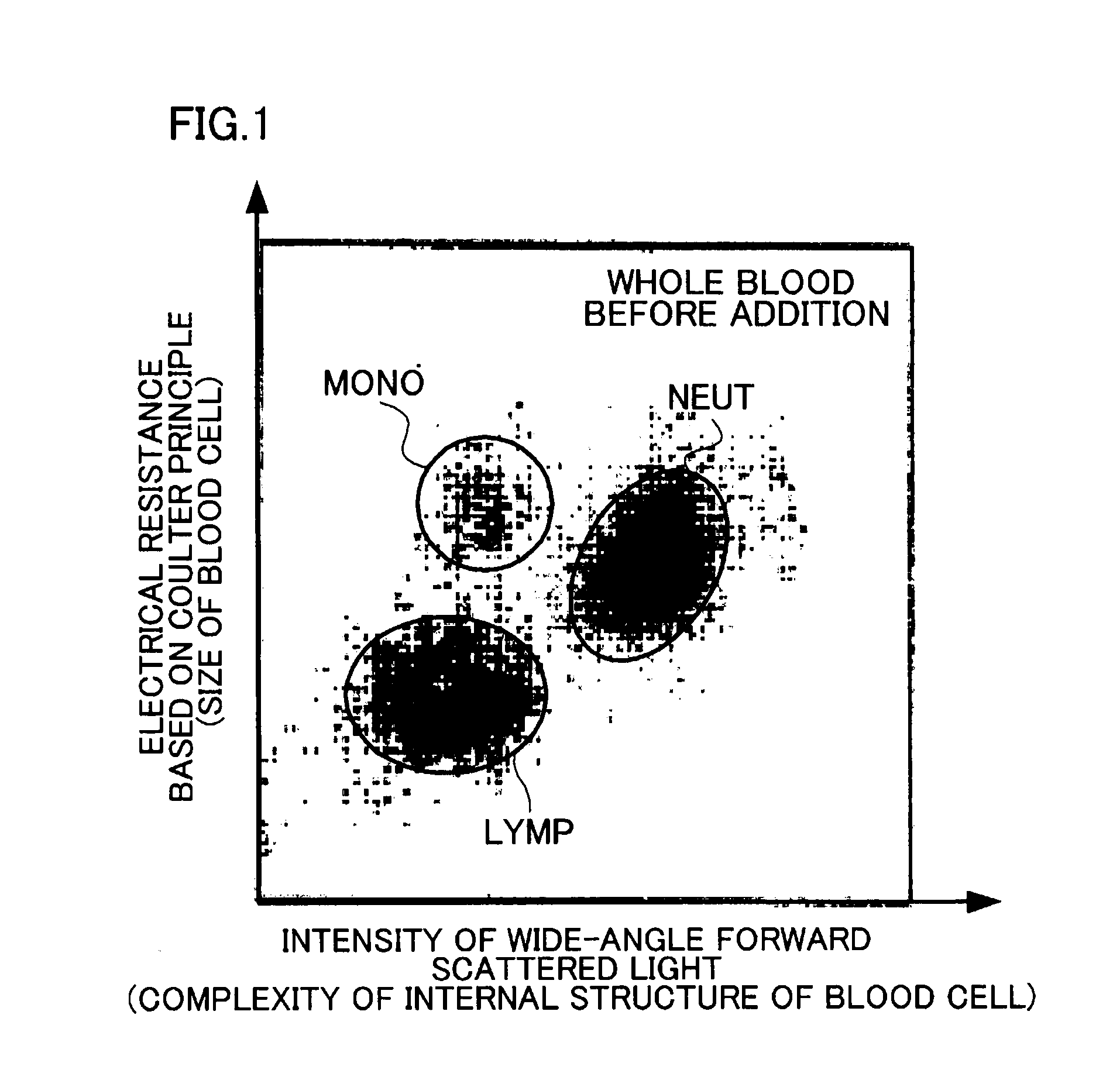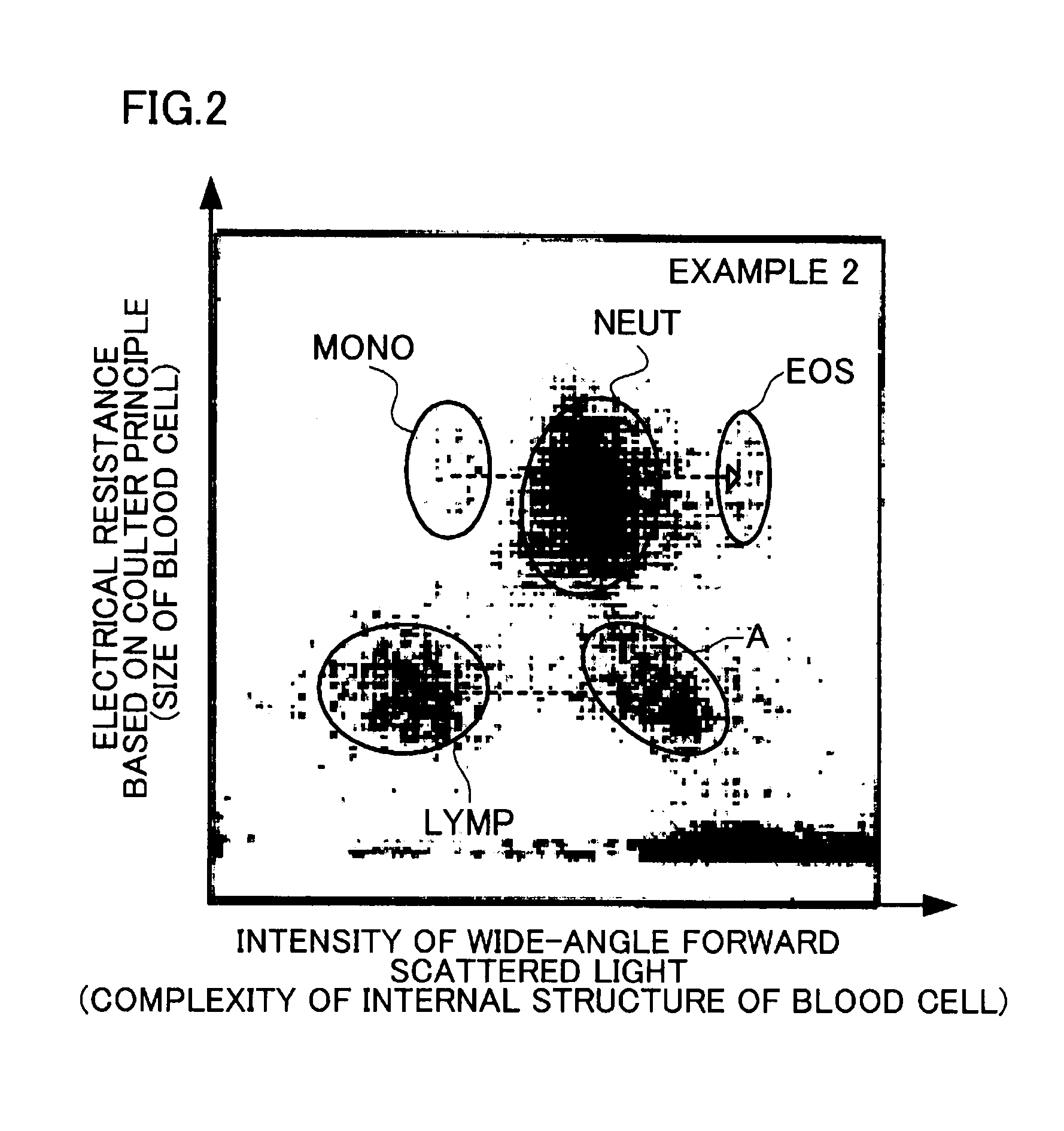Method for detecting target cell
a target cell and detection method technology, applied in the field of target cell detection method, can solve the problems of high cost of flow cytometer, high cost of labeled monoclonal antibody used as reagent, and large availability, so as to facilitate and promptly detect the target cell, easy and promptly provide data, and easy analysis
- Summary
- Abstract
- Description
- Claims
- Application Information
AI Technical Summary
Benefits of technology
Problems solved by technology
Method used
Image
Examples
preparation example
2.2. Dispersion Preparation Example
[0097]2 ml of blood collected from the vein of a healthy individual using a blood collection tube to which EDTA was added was put in a microtube. 200 microliters of the labeled particle dispersion obtained in each of Labeled Particle Production Examples 1 to 4 was added to the microtube to obtain a dispersion used in each example. The mixture was then mixed upside down 20 times, allowed to stand at room temperature (15 to 25° C.) for 20 minutes, and used in each example. The concentration of the labeled particles in the dispersion was 5×107 particles per microliter. As a control, 100 microliters of blood was used.
2.3. Measurement
[0098]The intensity of wide-angle forward scattered light and the electrical resistance based on the Coulter principle were measured using a blood analyzer “LH750”(manufactured by Beckman Coulter, Inc.) (5-part WBC differential hematology analyzer). The measured values were two-dimensionally plotted for each blood cell. The...
PUM
| Property | Measurement | Unit |
|---|---|---|
| Particle size | aaaaa | aaaaa |
| Fraction | aaaaa | aaaaa |
| Fraction | aaaaa | aaaaa |
Abstract
Description
Claims
Application Information
 Login to View More
Login to View More - R&D
- Intellectual Property
- Life Sciences
- Materials
- Tech Scout
- Unparalleled Data Quality
- Higher Quality Content
- 60% Fewer Hallucinations
Browse by: Latest US Patents, China's latest patents, Technical Efficacy Thesaurus, Application Domain, Technology Topic, Popular Technical Reports.
© 2025 PatSnap. All rights reserved.Legal|Privacy policy|Modern Slavery Act Transparency Statement|Sitemap|About US| Contact US: help@patsnap.com


